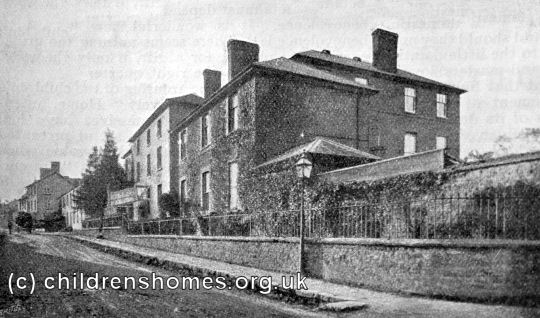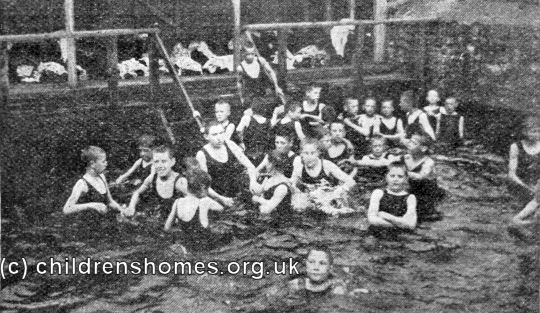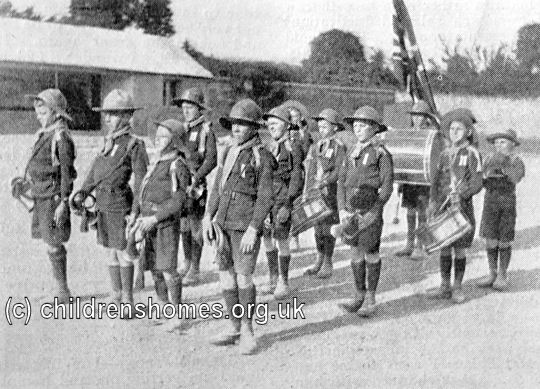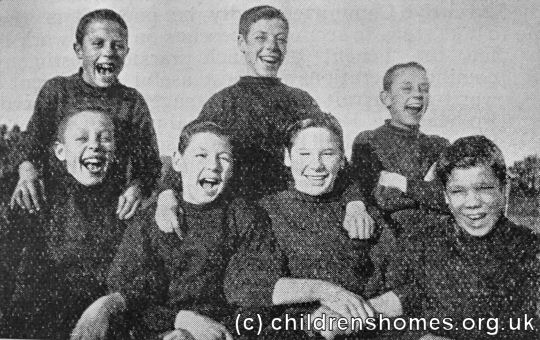St Boniface's Home for Boys, Sampford Peverell, near Tiverton, Devon
The St Boniface's Home for Boys was opened by the Waifs and Strays Society in 1907 at Sampford Peverell, near Tiverton. The home replaced the Society's Bersted Home for Boys at Bognor Regis which had outgrown its existing premises. The new location, a 2.5-acre site on Lower Town in Sampford Peverell, had for many years previously been occupied by the East Devon County School. The buildings needed considerable repair before re-opening as St Boniface's, a saint who had historical connections with the area. The home was formally dedicated on June 11th, 1908, by the Bishop of Crediton. Mr G. Davison, formerly of the Reading Home for Boys, was appointed as governor of the home.

St Boniface's Home for Boys, Sampford Peverell, 1908. © Peter Higginbotham

Opening day at St Boniface's Home for Boys, Sampford Peverell, 1908. © Peter Higginbotham

St Boniface's Home for Boys, Sampford Peverell, c.1908. © Peter Higginbotham

St Boniface's Home for Boys, Sampford Peverell, c.1909. © Peter Higginbotham

St Boniface's Home for Boys, Sampford Peverell, c.1910. © Peter Higginbotham
Sporting activities were high on the agenda for the St Boniface boys. As well as football and cricket, the home had its own swimming bath.

St Boniface's Home for Boys, Sampford Peverell, c.1921. © Peter Higginbotham

St Boniface's Home for Boys, Sampford Peverell, c.1927. © Peter Higginbotham
Boys at the home were taught a variety of practical skills including gardening, carpentry and picture framing. Their market-gardening efforts generated produce for consumption in the home itself or for sale locally. The knowledge they acquired also stood them in good stead in later life. In 1933, the home was designated as a vocational training centre.

Marrow harvest at St Boniface's Home for Boys, Sampford Peverell, c.1926. © Peter Higginbotham

Early salads at St Boniface's Home for Boys, Sampford Peverell, c.1934. © Peter Higginbotham
As in many of the Society's homes, a number of the older children were emigrated to Canada each year.

Staff and emigration group at St Boniface's Home for Boys, Sampford Peverell, 1912. © Peter Higginbotham
From the early years of the Boy Scout movement, the home had its own troop, which included a recruiting band.

Boy Scout band at St Boniface's Home for Boys, Sampford Peverell, 1914. © Peter Higginbotham

Haircut day at St Boniface's Home for Boys, Sampford Peverell, c.1914. © Peter Higginbotham
Christmas was always a highlight of the year for the boys. Here is a description of the first Christmas at the newly built home in 1907.

Dining-hall at St Boniface's Home for Boys, Sampford Peverell, c.1927. © Peter Higginbotham
When the St Giles' Home For Boys at Wrexham was closed in 1941, most of its residents were transferred to St Boniface's.

St Boniface's Home for Boys, Sampford Peverell, c.1921. © Peter Higginbotham
The home was eventually closed in 1952. The building no longer exists.
Records
Note: many repositories impose a closure period of up to 100 years for records identifying individuals. Before travelling a long distance, always check that the records you want to consult will be available.
- Index of the Society's first 30,000 children's case files ordered by surname.
- Index of the Society's first 30,000 children's case files ordered by date of birth.
- The Children's Society Records and Archive Centre is at Unit 25, Springfield House, 5 Tyssen Street, London E8 2LZ (email: archives@childrenssociety.org.uk). Files for children admitted to its homes after September 1926 were microfilmed in the 1980s and the originals destroyed. Some post-1926 files had already been damaged or destroyed during a flood. The Society's Post-Adoption and Care Service provides access to records, information, advice, birth record counselling, tracing and intermediary service for people who were in care or adopted through the Society.
- The Society has produced detailed catalogues of its records relating to disabled children, and of records relating to the Children's Union (a fundraising body mostly supported from the contributions of children).
Bibliography
- Bowder, Bill Children First: a photo-history of England's children in need (1980, Mowbray)
- Church of England Waifs and Strays' Society [Rudolfe, Edward de Montjoie] The First Forty Years: a chronicle of the Church of England Waifs and Strays' Society 1881-1920 (1922, Church of England Waifs and Strays' Society / S.P.C.K.)
- Higginbotham, Peter Children's Homes: A History of Institutional Care for Britain's Young (2017, Pen & Sword)
- Morris, Lester The Violets Are Mine: Tales of an Unwanted Orphan (2011, Xlibris Corporation) — memoir of a boy growing up in several of the Society's homes (Princes Risborough, Ashdon, Hunstanton, Leicester) in the 1940s and 50s.
- Rudolf, Mildred de Montjoie Everybody's Children: the story of the Church of England Children's Society 1921-1948 (1950, OUP)
- Stroud, John Thirteen Penny Stamps: the story of the Church of England Children's Society (Waifs and Strays) from 1881 to the 1970s (1971, Hodder and Stoughton)
Links
- Hidden Lives Revealed — the story of the children who were in the care of The Children's Society in late Victorian and early 20th Century Britain.
- The Children's Society
Except where indicated, this page () © Peter Higginbotham. Contents may not be reproduced without permission.


